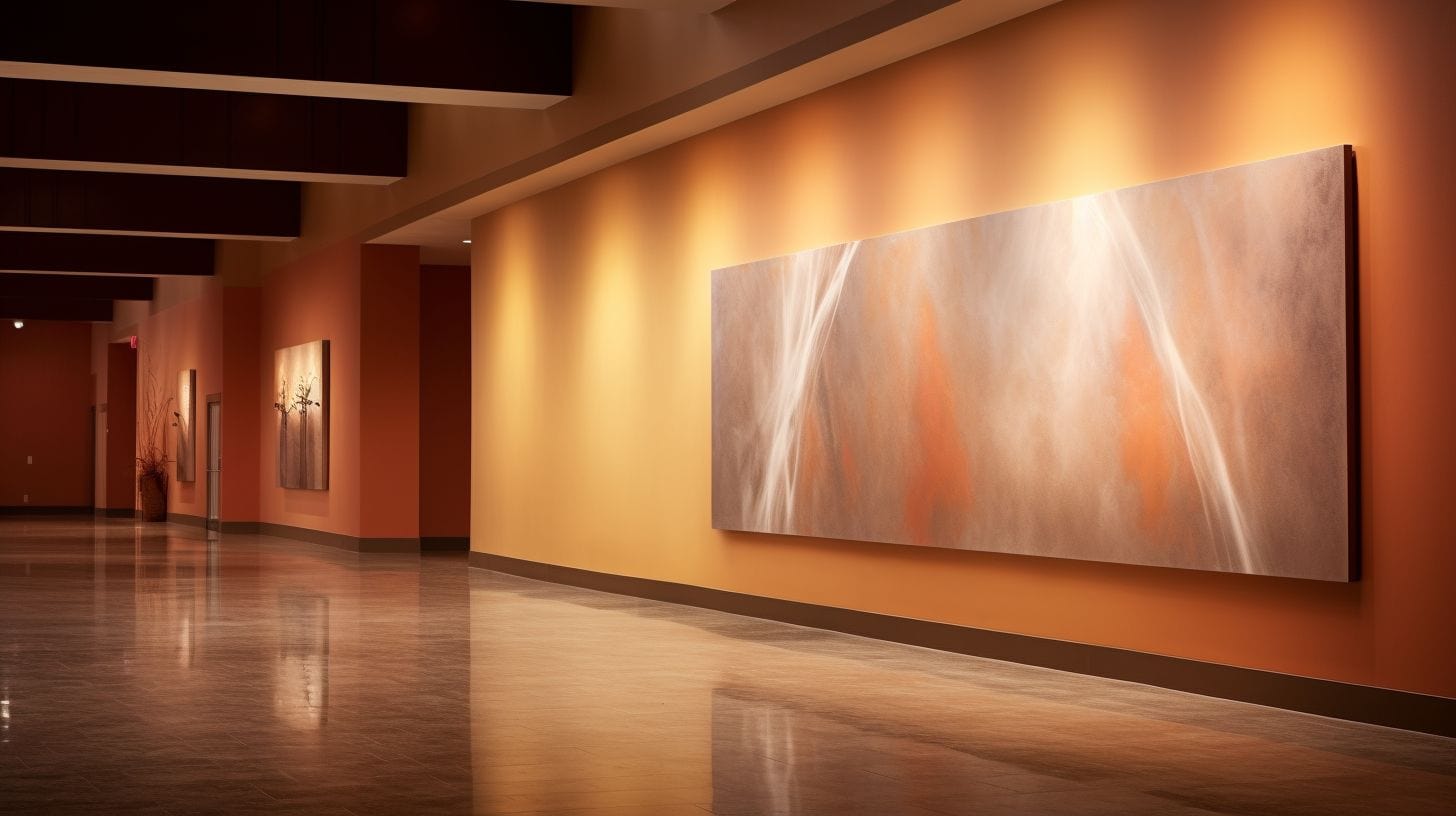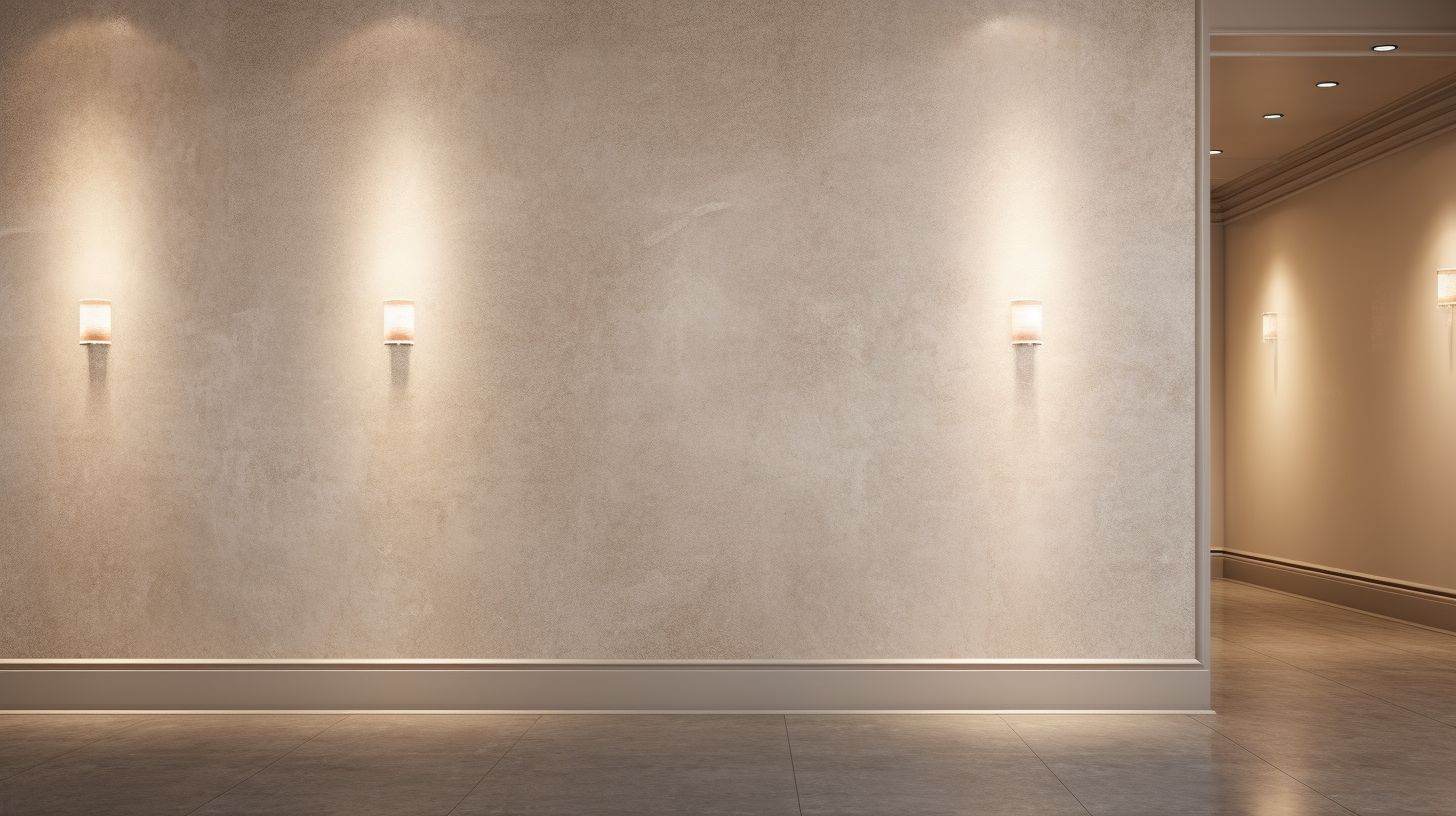Venetian plaster, renowned for its elegant, smooth finish and historical significance, has evolved over centuries to meet modern design needs. Traditionally made from lime and marble dust, Venetian plaster has gained a reputation for its durability, breathability, and timeless beauty. However, the introduction of acrylic Venetian plaster has expanded the possibilities for this versatile material, offering new advantages in terms of application, durability, and aesthetics.
Acrylic Venetian Plaster: A Modern Twist on a Classic
Acrylic Venetian plaster incorporates synthetic acrylic resins as binders, which distinguish it from the traditional lime-based plasters. This modern adaptation has made Venetian plaster more accessible and adaptable to a variety of surfaces and environments.
In this article, we will explore the composition and properties of acrylic Venetian plaster, its durability and flexibility, and how it compares to traditional lime-based plasters.

Use of Acrylic Binders
Composition and Properties
Ingredients: Acrylic Resins, Pigments, and Fillers
Acrylic Venetian plaster is composed primarily of acrylic resins, pigments, and various fillers. The acrylic resins act as the main binding agent, providing the plaster with its unique properties. These synthetic binders differ significantly from the natural lime used in traditional Venetian plaster. Pigments are added to achieve a wide range of colours, while fillers help to create the desired texture and consistency.
Differences Between Acrylic and Lime-based Binders
The primary difference between acrylic and lime-based binders lies in their composition and resulting properties. Acrylic binders are synthetic, offering enhanced flexibility and durability compared to natural lime. Lime-based plasters are known for their breathability and natural antibacterial properties, while acrylic plasters provide greater adhesion and resistance to cracking.
Advantages of Acrylic Binders
Enhanced Adhesion and Flexibility
Acrylic binders offer superior adhesion, allowing the plaster to bond effectively with a variety of surfaces, including drywall, wood, and concrete. This flexibility makes acrylic Venetian plaster suitable for both interior and exterior applications. The enhanced flexibility also helps prevent cracking and peeling, ensuring a longer-lasting finish.
Faster Drying Times
One of the significant advantages of acrylic Venetian plaster is its faster drying time compared to lime-based plasters. This accelerated drying process allows for quicker project completion and reduces the waiting time between layers. As a result, acrylic plaster is often preferred for projects with tight timelines.
Greater Colour Consistency and Range
Acrylic Venetian plaster offers greater colour consistency and a broader range of hues. The synthetic pigments used in acrylic plaster maintain their colour integrity over time, reducing the risk of fading. This allows for more precise colour matching and the ability to achieve vibrant, consistent finishes across different applications.
Durability and Flexibility
Enhanced Durability
Resistance to Cracking and Chipping
Acrylic Venetian plaster is renowned for its enhanced durability compared to traditional lime-based plaster. The synthetic acrylic binders provide a flexible matrix that is less prone to cracking and chipping. This resilience makes acrylic plaster ideal for high-traffic areas and surfaces that experience frequent impact or movement.
Moisture and Mildew Resistance
The composition of acrylic Venetian plaster makes it highly resistant to moisture and mildew. Unlike lime-based plasters, which are naturally porous and breathable, acrylic plasters form a more impermeable barrier. This property makes them suitable for use in humid environments, such as bathrooms and kitchens, where traditional plaster might struggle to maintain its integrity.
Long-term Performance in Various Environments
Acrylic Venetian plaster is designed to perform well in a variety of environments, including both interior and exterior applications. Its robust nature ensures that it maintains its appearance and functionality over time, even when exposed to challenging conditions such as temperature fluctuations and environmental pollutants.
Flexibility and Versatility
Application on Diverse Substrates
One of the standout features of acrylic Venetian plaster is its versatility in application. It can adhere to a wide range of substrates, including drywall, wood, concrete, and even metal. This adaptability allows for greater creative freedom in design and makes it a suitable choice for a broad array of projects, from residential interiors to commercial exteriors.
Suitability for High-Traffic Areas and Exterior Applications
The enhanced durability and moisture resistance of acrylic Venetian plaster make it particularly well-suited for high-traffic areas and exterior applications. In commercial spaces such as restaurants, hotels, and retail environments, where surfaces are subject to heavy use and frequent cleaning, acrylic plaster provides a long-lasting, low-maintenance solution. Its ability to withstand the elements also makes it an excellent choice for exterior facades and outdoor decorative features.
Customisable Textures and Finishes
Acrylic Venetian plaster offers a high degree of flexibility in terms of texture and finish. The material can be manipulated to create a variety of effects, from smooth, polished surfaces to textured, rustic finishes. This versatility allows designers to tailor the plaster to suit specific aesthetic preferences and project requirements, making it a valuable tool in modern interior and exterior design.
Comparison with Lime-based Plasters
Key Differences
Composition: Synthetic vs. Natural Materials
The most significant difference between acrylic and lime-based Venetian plaster lies in their composition. Acrylic plaster uses synthetic acrylic resins as binders, while lime-based plaster relies on natural lime. This fundamental difference impacts their properties, application methods, and suitability for various environments.
Application Methods and Drying Times
Acrylic Venetian plaster generally has a faster drying time compared to lime-based plaster, which can take longer due to its natural composition. This accelerated drying process makes acrylic plaster more convenient for projects with tight deadlines. Additionally, acrylic plaster can be applied to a wider range of substrates without the need for extensive surface preparation, while lime-based plaster requires more meticulous preparation and often a longer curing period.
Visual and Textural Differences
Acrylic and lime-based plasters can produce different visual and textural effects. Lime-based plaster tends to have a more organic, natural look with subtle variations in colour and texture, providing a timeless, classical appearance. Acrylic plaster, on the other hand, offers greater colour consistency and can achieve a wider range of finishes, from high-gloss to matte, depending on the additives and application techniques used.
Pros and Cons of Each Type
Benefits of Acrylic Venetian Plaster
- Enhanced Durability: More resistant to cracking, chipping, and moisture damage.
- Faster Drying Time: Quicker application process, suitable for projects with tight schedules.
- Versatility: Adheres to a wide range of substrates and offers diverse textures and finishes.
- Colour Stability: Synthetic pigments provide consistent and vibrant colours that resist fading.
Benefits of Lime-based Venetian Plaster
- Natural Composition: Eco-friendly and breathable, improving indoor air quality.
- Historical Authenticity: Provides a classic, timeless look with natural variations.
- Antibacterial Properties: Natural lime has inherent antibacterial qualities.
- Sustainability: Made from natural materials, contributing to sustainable building practices.
Situations Where One May Be Preferred Over the Other
- Acrylic Venetian Plaster: Ideal for high-traffic areas, exterior applications, and projects requiring quick turnaround times. Suitable for modern designs that benefit from its colour consistency and versatile finishes.
- Lime-based Venetian Plaster: Preferred for historic restorations, eco-friendly projects, and interiors where breathability and natural aesthetics are prioritised. Suitable for creating a classical, timeless look with authentic, organic textures.
Application Methods
Surface Preparation
Cleaning and Priming the Surface
Proper surface preparation is essential for achieving a flawless finish with acrylic Venetian plaster. Begin by thoroughly cleaning the surface to remove any dust, grease, or existing coatings. This ensures optimal adhesion of the plaster. After cleaning, repair any cracks or holes and sand the surface to create a smooth, even base. Applying a suitable primer is crucial to enhance the plaster’s adhesion and ensure durability.
Mixing and Applying Acrylic Plaster
Proper Ratios and Mixing Techniques
Mixing acrylic Venetian plaster requires precision to achieve the desired consistency and performance. Follow the manufacturer’s instructions regarding the ratios of acrylic binder, pigments, and fillers. Use a mechanical mixer to blend the ingredients thoroughly, ensuring a smooth, lump-free mixture. The consistency should be creamy and easy to spread.
Layering Methods for Optimal Coverage
Apply the acrylic plaster in multiple thin layers to build up the desired texture and depth. Start with a base coat, using a stainless steel trowel to spread the plaster smoothly across the surface. Allow each layer to dry partially before applying the next. This method prevents cracking and ensures a strong, durable finish.
- First Layer: Apply a thin base coat, ensuring complete coverage of the surface. Use broad, sweeping motions with the trowel for an even application.
- Subsequent Layers: Continue applying thin layers, each time using slightly different trowel techniques to create depth and texture. Allow each layer to dry to the touch before adding the next.
Finishing Techniques
Tools and Methods for Achieving Desired Textures
The choice of tools can significantly impact the final texture and finish of the plaster. Stainless steel trowels are preferred for their smooth application and ability to burnish the plaster to a high sheen. Specialty tools such as spatulas, brushes, and rollers can be used to create unique textures and patterns. Experiment with different tools and techniques to achieve the desired look.
Polishing and Sealing for Enhanced Durability
After the final layer of acrylic plaster has been applied and partially dried, begin the polishing process. Use a clean, stainless steel trowel to compress and smooth the surface, applying firm, even pressure in circular or overlapping motions to achieve a uniform, polished finish. For an extra high-gloss finish, consider using a polishing compound or wax.
- Polishing: Once the plaster is fully dry, use a soft cloth or a mechanical buffer to polish the surface to the desired sheen. This step enhances the reflective qualities of the plaster and adds depth to the finish.
- Sealing: Apply a sealer designed for acrylic plaster to protect the surface from moisture, stains, and wear. Use a soft cloth or brush to apply the sealer evenly, allowing it to dry completely before use.
Common Applications and Uses
Residential Applications
Living Rooms and Bedrooms
Acrylic Venetian plaster can transform living rooms and bedrooms into luxurious, elegant spaces. Its versatility allows for a variety of finishes, from smooth and polished to textured and matte. Use it on feature walls to create a focal point or apply it to entire rooms for a cohesive, sophisticated look. The durability and easy maintenance of acrylic plaster make it a practical choice for high-traffic areas like living rooms, while its aesthetic appeal enhances the tranquillity of bedrooms.
Kitchens and Bathrooms
In kitchens and bathrooms, acrylic Venetian plaster offers both beauty and practicality. Its moisture-resistant properties make it ideal for areas exposed to water and humidity. Apply it to walls, backsplashes, and even countertops to create a seamless, easy-to-clean surface. The wide range of available colours and textures allows for customisation to match any design scheme, from modern minimalism to classic elegance.

Commercial Applications
Offices and Retail Spaces
Acrylic Venetian plaster is well-suited for commercial environments such as offices and retail spaces. Its durability and low maintenance requirements make it a cost-effective solution for high-traffic areas. Use it to create stylish, professional atmospheres in reception areas, conference rooms, and executive offices. In retail spaces, acrylic plaster can enhance the shopping experience by providing a luxurious backdrop for merchandise displays and store interiors.
Restaurants and Hotels
In the hospitality industry, acrylic Venetian plaster adds a touch of sophistication and luxury to restaurants and hotels. Its versatile application allows for stunning feature walls, elegant dining areas, and inviting lobby spaces. The material’s resistance to wear and moisture ensures that it maintains its beauty and functionality even in busy, high-use environments. Customisable textures and finishes allow designers to create unique, memorable spaces that enhance the guest experience.
Artistic and Decorative Uses
Accent Walls and Focal Points
Acrylic Venetian plaster is perfect for creating accent walls and focal points in any setting. Its ability to achieve a wide range of textures and finishes makes it an excellent choice for highlighting architectural features or creating dramatic visual effects. Use it to draw attention to specific areas in a room, such as a fireplace, a headboard wall in a bedroom, or a reception desk in a commercial space.
Custom Installations and Furniture
Beyond walls and ceilings, acrylic Venetian plaster can be applied to custom installations and furniture. Coating tables, benches, and other furniture pieces with acrylic plaster creates cohesive, elegant designs that complement the overall decor. Its flexibility and durability make it suitable for both decorative and functional elements, allowing for endless creative possibilities.
Maintenance and Care
Regular Cleaning
Dusting and Gentle Cleaning Methods
Maintaining the pristine appearance of acrylic Venetian plaster is relatively simple and requires minimal effort. Regular dusting with a soft, dry cloth or a feather duster helps to keep the surface free from dust and debris. For more thorough cleaning, use a damp cloth with a mild, pH-neutral soap. Gently wipe the surface, avoiding excessive moisture to prevent any potential damage to the plaster.
Avoiding Abrasive Cleaners
To preserve the integrity and finish of acrylic Venetian plaster, avoid using abrasive cleaners or scrubbing tools. These can scratch the surface and dull the finish. Stick to non-abrasive, pH-neutral cleaning products and soft cleaning cloths. Always test any cleaning product on a small, inconspicuous area before applying it to the entire surface to ensure it does not harm the plaster.
Periodic Maintenance
Reapplying Sealers or Wax for Protection
To maintain the durability and sheen of acrylic Venetian plaster, periodic reapplication of sealers or wax may be necessary. This process helps to refresh the surface and restore its original lustre.
- Sealer Application: Apply a thin, even layer of sealer using a soft cloth or brush. Allow it to dry completely before buffing with a clean, dry cloth to enhance the shine and provide a protective layer.
- Wax Application: For an extra layer of protection and gloss, consider applying a specialized wax designed for acrylic plaster. Use a soft cloth to apply the wax evenly, then buff the surface to achieve the desired level of shine.
Repairing Minor Imperfections
Despite its durability, acrylic Venetian plaster may occasionally develop minor imperfections such as small scratches or chips. These can be repaired relatively easily to maintain the pristine appearance of the plaster.
- Small Scratches: Lightly sand the scratched area with fine-grit sandpaper (around 400-600 grit). Reapply a thin layer of plaster if necessary, blending it seamlessly with the surrounding area. Burnish the repaired area to restore the finish.
- Chips and Cracks: Fill any chips or cracks with a matching plaster mixture. Once dried, sand the area smoothly and reapply the final layers of plaster, ensuring the texture matches the existing finish.
Long-Term Care
Protecting the Surface from Damage
To ensure the longevity of acrylic Venetian plaster, take measures to protect it from physical damage. Avoid placing heavy objects or sharp items directly against the plastered surfaces, as these can cause dents or scratches. Use protective padding or barriers if necessary, especially in high-traffic areas, to safeguard the surface.
Environmental Considerations for Longevity
Acrylic Venetian plaster can be sensitive to environmental conditions such as high humidity or extreme temperature changes. Ensure that the space is well-ventilated to prevent moisture build-up, which can lead to mold or mildew growth. In areas with fluctuating temperatures, take precautions to maintain a stable indoor climate, minimising the impact on the plaster.
Conclusion
The Benefits and Versatility of Acrylic Venetian Plaster
Acrylic Venetian plaster offers a modern twist on a classic finish, combining the timeless elegance of traditional Venetian plaster with the enhanced durability and flexibility of acrylic binders. Its composition, which includes synthetic acrylic resins, pigments, and fillers, allows for a wider range of applications and greater resistance to environmental stressors.
Key Takeaways on Acrylic Venetian Plaster
Acrylic Venetian plaster is distinguished by its enhanced adhesion, faster drying times, and greater color consistency compared to lime-based plasters. These properties make it an ideal choice for both residential and commercial applications, offering long-term performance and aesthetic appeal. Its flexibility allows it to be applied to a variety of substrates, making it suitable for diverse design projects.
Application Methods and Maintenance
Proper surface preparation, mixing, and application techniques are crucial for achieving a flawless finish with acrylic Venetian plaster. Regular cleaning and periodic maintenance, such as reapplying sealers or wax, help preserve the plaster’s beauty and durability. With its resistance to cracking, moisture, and mildew, acrylic Venetian plaster is a practical and stylish choice for modern interiors and exteriors.
Diverse Applications in Modern Design
Acrylic Venetian plaster is versatile enough to be used in a wide range of settings, from elegant residential interiors to high-traffic commercial spaces. Its customisable textures and finishes make it suitable for accent walls, feature walls, and custom installations, enhancing the aesthetic appeal of any space. Whether in living rooms, kitchens, bathrooms, offices, retail spaces, or hotels, acrylic Venetian plaster provides a sophisticated, durable finish that stands the test of time.
Discover the Benefits of Acrylic Venetian Plaster in Sydney with Venetian Plasterer
At Venetian Plasterer, we specialise in applying acrylic Venetian plaster, offering enhanced durability and flexibility for our Sydney clients. Utilising acrylic binders, this plaster type provides a robust and versatile finish that stands up to wear and tear. Our skilled team expertly compares acrylic to traditional lime-based plasters, ensuring you get the best material for your project. With our professional Venetian plaster services in Sydney, you can achieve a stunning, long-lasting finish that elevates the beauty and functionality of any space.
Related

